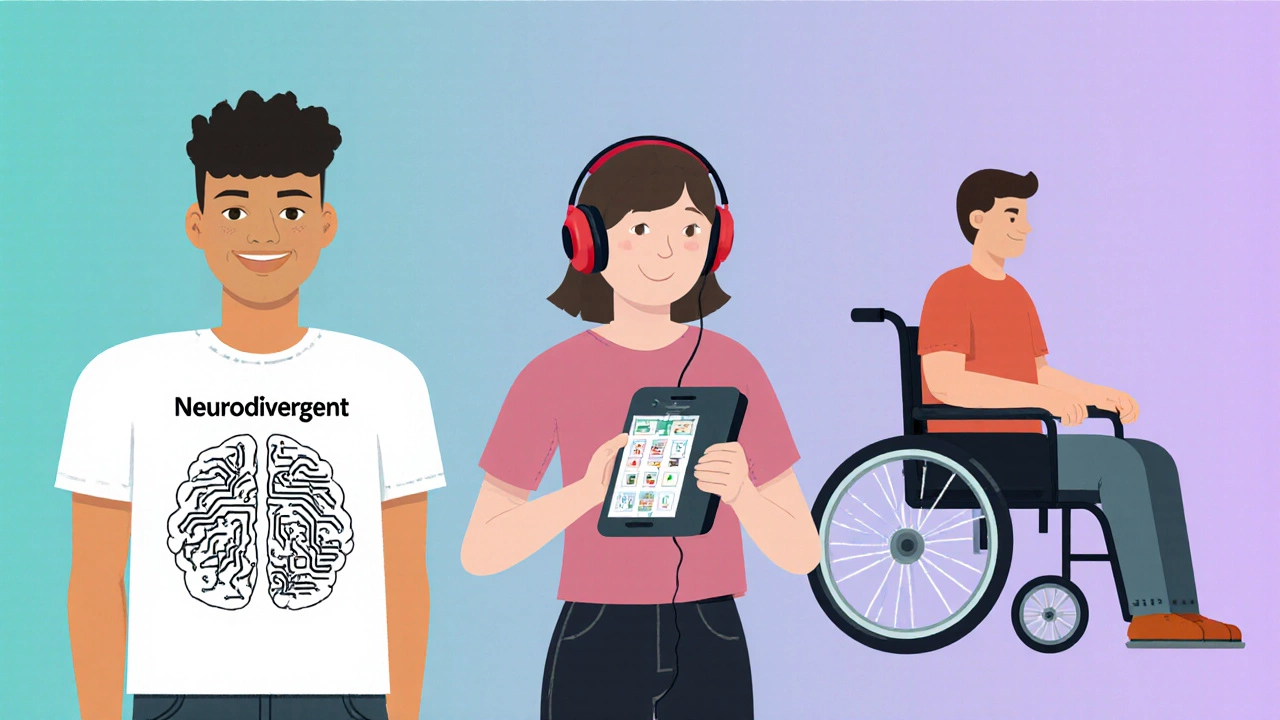Australian Inclusive Language Checker
Recommended Alternative:
Neurodivergent
An identity-first label for those whose brain functions differ from neurotypical norms.
Students with additional needs
Used in Australian schools to describe learners requiring extra support without diagnosis.
Students with disabilities
Legal term aligned with the Disability Discrimination Act 1992.
Person-first language
Places the individual before the condition (e.g., 'student with dyslexia').
Language shapes how we think about ability, and the new term for special needs has been changing fast. Schools, workplaces, and everyday conversation are all moving away from outdated labels toward words that respect identity and promote inclusion. This guide breaks down the most common fresh terms, explains why they matter, and shows you how to use them correctly in an Australian context.
Why the Shift Happened
For decades, "special needs" was the go‑to label in education policy and parent‑teacher discussions. While well‑intended, the phrase bundled a wide range of conditions under one umbrella, often implying a deficit rather than a difference. Over the last ten years, research from the Australian Institute of Health and Welfare and advocacy groups like the Australian Council for Neurodiversity have highlighted the negative impact of pathologising language.
Key drivers of the shift include:
- Growing awareness of neurodiversity as a natural variation of human brains.
- Legal frameworks such as the Disability Discrimination Act 1992 (DDA) encouraging respectful terminology.
- Pedagogical models like Universal Design for Learning (UDL) that focus on adaptable teaching rather than labeling students.
Core New Terms and Their Meanings
Below are the most widely accepted replacements for "special needs". Each term is introduced with a short definition and the context where it shines.
Neurodivergent is a broad, identity‑first label for people whose brain functions differ from what’s considered neurotypical, including autism, ADHD, dyslexia and related conditions. This term is popular in both academic circles and community groups because it emphasizes difference over deficit.
Students with additional needs covers learners who require extra support-whether it’s assistive technology, modified assessments, or tailored instruction-without tying them to a medical diagnosis. Australian schools often use this phrasing in the Australian Curriculum documentation.
Students with disabilities refers specifically to learners whose impairments substantially limit one or more major life activities, as defined by the DDA. This legal term is essential for policy compliance and funding allocations.
Inclusive language is the practice of choosing words that respect all individuals and avoid marginalising language. It underpins the move away from "special needs" and guides everyday communication.
Person‑first language places the individual before the condition (e.g., "student with dyslexia"), reinforcing that the person is not defined by the disability. Many Australian government publications still recommend this style.
Identity‑first language reverses the order (e.g., "autistic student"), reflecting the preference of many within neurodivergent communities. It's gaining traction in progressive educational settings.

Comparison: Old vs. New Terminology
| Aspect | Old Term | New Term |
|---|---|---|
| Core Focus | Deficit‑based | Difference‑based |
| Legal Alignment | Limited | Matches DDA and UNCRPD language |
| Community Preference | Mixed | Strongly favoured by advocacy groups |
| Educational Impact | Often triggers low expectations | Encourages high expectations & universal design |
How to Choose the Right Term in Your Setting
There isn’t a one‑size‑fits‑all answer. Follow these decision steps to pick language that respects the individuals you work with.
- Ask the person or family which label they prefer. Preference data from the Australian Neurodiversity Survey (2023) shows 68% of respondents favour identity‑first terms for neurodivergent identities.
- Consider the legal context. If you’re drafting policy, align with the DDA and use "students with disabilities" for clarity.
- Match the instructional approach. Schools that implement Universal Design for Learning often adopt "students with additional needs" to keep the focus on adaptable teaching.
- Use inclusive language consistently across all communications-emails, newsletters, and classroom signage.
- Re‑evaluate annually. Language trends evolve; a term that feels respectful today may shift tomorrow.
Practical Tips for Everyday Use
- Replace "special needs children" with "learners who benefit from additional support".
- When speaking about a specific condition, use the person‑first or identity‑first form that the individual prefers.
- Avoid euphemisms like "handicapped" or "challenged"-they can carry hidden stigma.
- In written documents, highlight the term in a glossary so all staff understand the rationale.
- Leverage EdTech tools (e.g., speech‑to‑text, audiobooks) that support diverse learners without labeling them.

Common Misconceptions to Watch Out For
Even well‑meaning educators can fall into language traps. Here are three myths that pop up often:
- Myth: Using "special needs" is harmless because it’s familiar.
Reality: Familiarity can mask bias. Research from the University of Melbourne (2022) linked the phrase to lower academic expectations. - Myth: Identity‑first language erases the disability.
Reality: For many neurodivergent people, the identity is a source of pride, not a medical condition. - Myth: One term fits all contexts.
Reality: Context matters-policy documents need legal precision, while classroom conversations thrive on flexibility.
Resources for Further Learning
Want to dive deeper? Check out these Australian‑focused resources (they’re free or low‑cost):
- Australian Council for Neurodiversity - "Inclusive Language Toolkit" (2024).
- National Disability Insurance Scheme (NDIS) - Guide to Person‑First vs. Identity‑First language.
- UNESCO's "Universal Design for Learning in Australian Schools" report (2023).
- University of Queensland’s free online course on Disability Law and Policy.
Frequently Asked Questions
Is "neurodivergent" appropriate for all disabilities?
No. "Neurodivergent" specifically refers to cognitive variations like autism, ADHD, dyslexia, and related conditions. Physical, sensory, or intellectual disabilities are better described with terms like "students with disabilities" or "students with additional needs".
Should I always use person‑first language?
It depends on preference. Government guidelines often default to person‑first, but many neurodivergent individuals prefer identity‑first. The safest approach is to ask.
How does the Disability Discrimination Act influence terminology?
The DDA defines "disability" in legal terms and requires language that does not discriminate. Using "students with disabilities" aligns with the Act and helps schools meet compliance.
Can I use "additional needs" for post‑secondary students?
Yes. Many universities in Australia have "Support Services for Students with Additional Needs" units that adopt inclusive language across campuses.
What role does EdTech play in inclusive terminology?
EdTech provides tools-like captioning, text‑to‑speech, and adaptive assessments-that support diverse learners without labeling them. Using these tools reinforces the shift from "special needs" to ability‑focused support.

